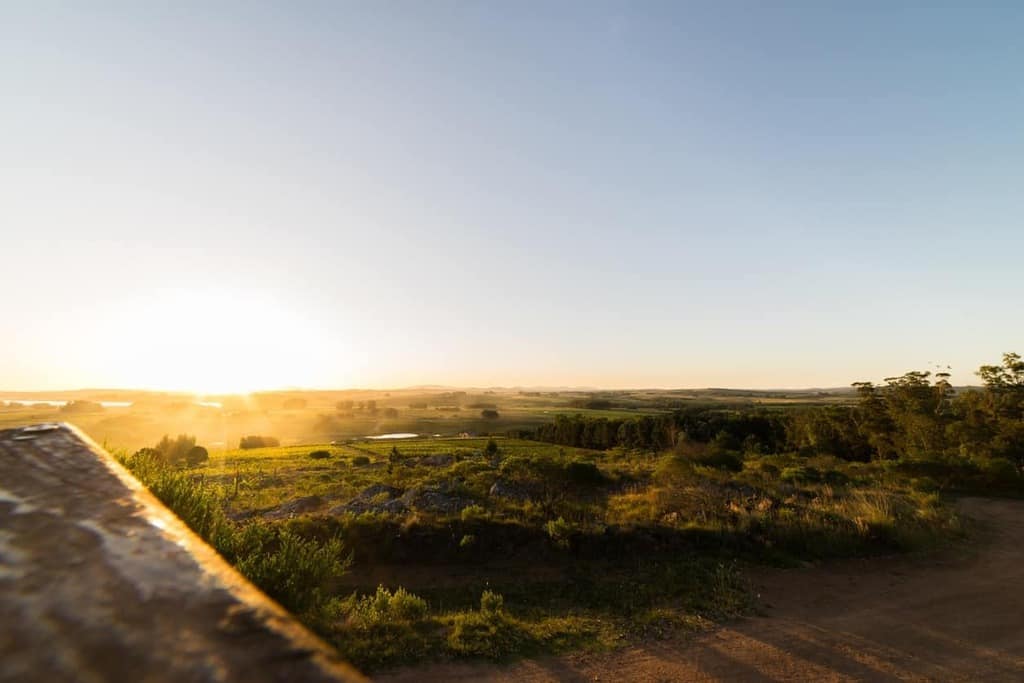Last Updated on September 9, 2019.
Tannat Wine Profile
Native to France, Tannat has become the unlikely hero of Uruguay and put it on the winemaking map. It’s an interesting grape that continues to surprise with the way it expresses terroir so specifically. Where it’s grown and how it’s vinified will change its flavor profile considerably so it’s a pretty exciting grape for experimental winemakers to work with.
On the nose, Tannat exhibits black fruit, topsoil, herbs and wet stones. On the palate, it can range from highly tannic and structured to softer and more rounded. It typically displays blackberry, current, plum, smoke, minerality, dried spices, but the berry quality can be fruitier and softer when it’s from Uruguay.
Tannat Food Pairings
Tannat tends to work best with bolder dishes to stand up to the strength of its structure and flavor profile. Grilled game or lamb works very well for Tannats from Southwest France, as well as black olive, eggplant, and mushroom-based dishes. For those from Uruguay, the options are broader: grilled meats of just about all kinds work well, though overly hot sauce will mask the nuances of the wine.
Wine Growing Regions for Tannat
Tannat is thought to originally be from the Basque region of France but is best known as the grape of Madiran located in the Southwest region along the foothills of the Pyrenees. Although most Madirans are 100% Tannat, they can also be blended with Cabernet Franc, Cabernet Sauvignon, and Fer. Tannat is, however, still found in Irouleguy in Basque country and this key location is how it made its way to South America. Around 1870, Basque immigrants brought vines with them to Uruguay where they then began to thrive. Today, more Tannat in grown and produced in Uruguay than it is anywhere else in the world.
Tannat has shown a lot of promise in hotter areas of California as well. Tablas Creek is partially responsible for its California growth. In 1990, it received Tannat cuttings from the Perrin nursery despite Tannat not being a varietal typically found in the Rhône Valley. Since Tannat is a fairly easy grape to grow, the nurseryman felt it would do well in California and it certainly has. Today, it can be found throughout the state including Paso Robles, Monterey, and Mendocino.
Tannat continues to show global promise and is currently cultivated in Argentina, Brazil, Australia, Italy, and South Africa. In the United States, it’s also found in Oregon and Arizona and shows great potential to be grown elsewhere.
Check out some of these Tannat and Tannat-based blends from around the world:
- Chateau Peyros, Madiran, Southwest, France
- Domaine Ilarria, Irouleguy,
- Bodega Garzon Single Vineyard, Uruguay
- Dos Minas, Cafayate Valley, Salta, Argentina
- Rousseau, “The Musketeer”, Adler Springs Vineyard, Mendocino, California
- Tablas Creek, Adelaida District, Paso Robles, California
Learn About These Other Wine Grape Varieties
Written By Jamie Metzgar
Jamie Elizabeth Metzgar began her career in wine by pouring in a tasting room on the East End of Long Island, NY. After moving to New York City, she landed a position at Chambers Street Wines where she was encouraged to pursue wine education at the Wine & Spirits Education Trust (WSET). She earned Level III certification there and has since earned California Wine Appellation Specialist and Certified Specialist of Wine certifications as well. After way too many moves, she has recently landed in Northern California where she is compiling an unofficial roster of dog-friendly tasting rooms.
Tannat Tasting Notes & Aromas
On the nose, Tannat exhibits black fruit, topsoil, herbs and wet stones. On the palate, it can range from highly tannic and structured to softer and more rounded. It typically displays blackberry, current, plum, smoke, minerality, dried spices, but the berry quality can be fruitier and softer when it’s from Uruguay.
The Structure and Style of Tannat Wines & Blends
Body Full
Sugar Dry
Acidity Medium
Alcohol Medium - Plus
Tannins High


[…] Tannat: Características de la variedad de uva, perfil de sabor y maridajes de alimentos (winetravel… […]
It was my best vinifera variety in north central Texas (north Dallas). I consider it a blender, as it needs some lighter fruit tones to achieve balance in a wine.